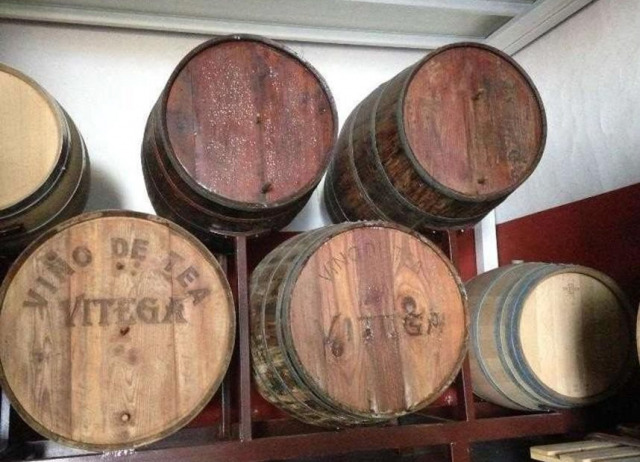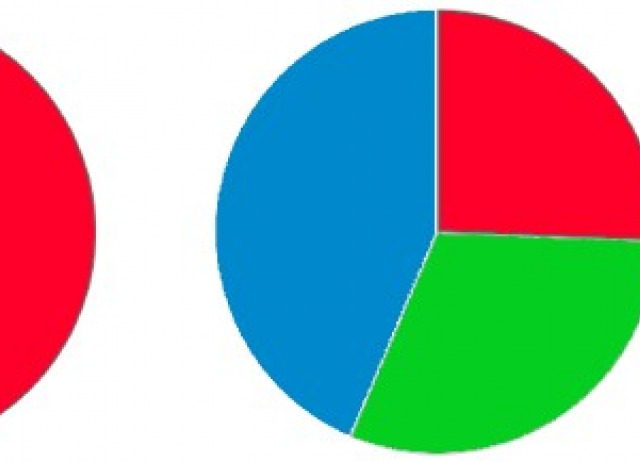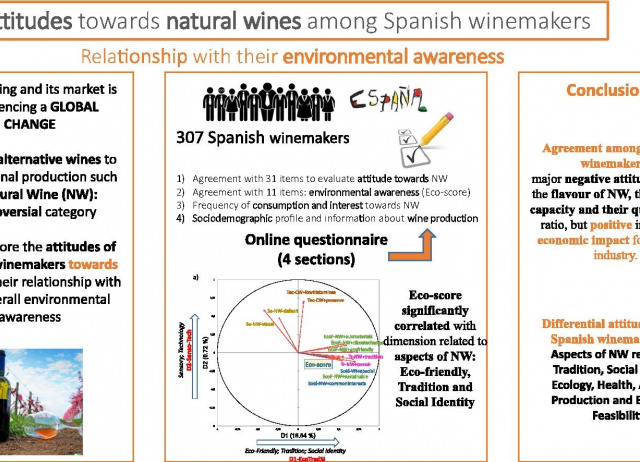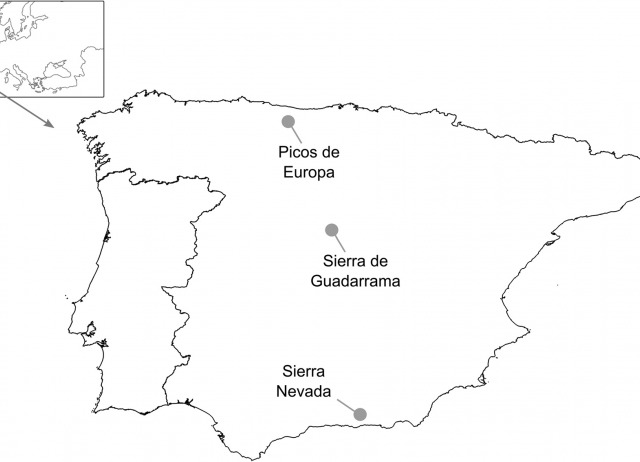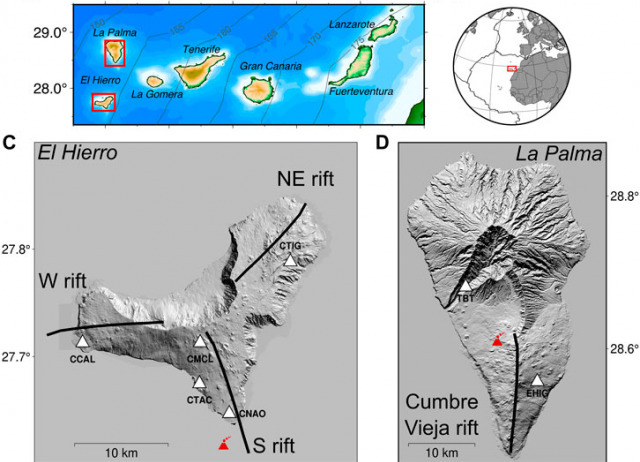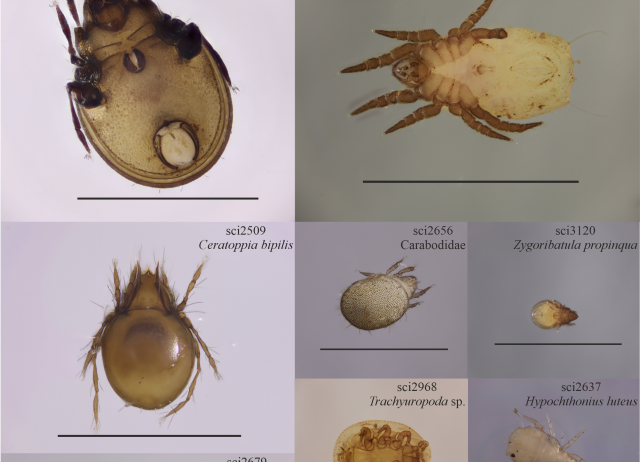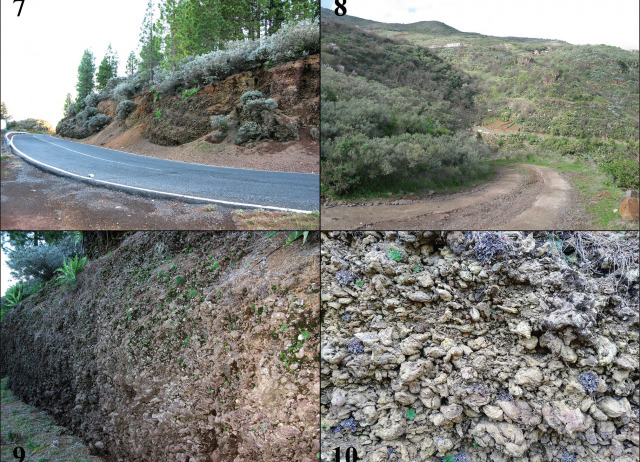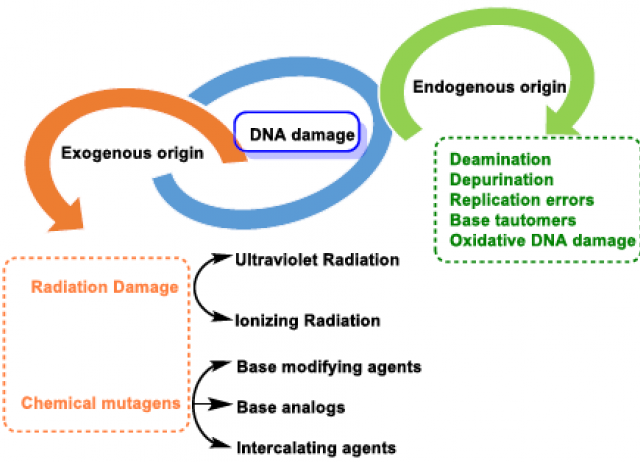
Antioxidant Metabolism Pathways in Vitamins, Polyphenols, and Selenium: Parallels and Divergences
Free radicals (FRs) are unstable molecules that cause reactive stress (RS), an imbalance between reactive oxygen and nitrogen species in the body and its ability to neutralize them. These species are generated by both internal and external factors and can damage cellular lipids, proteins, and DNA. Antioxidants prevent or slow down the oxidation process by interrupting the transfer of electrons between substances and reactive agents. This is particularly important at the cellular level because oxidation reactions lead to the formation of FR and contribute to various diseases. As we age, RS accumulates and leads to organ dysfunction and age-related disorders. Polyphenols; vitamins A, C, and E; and selenoproteins possess antioxidant properties and may have a role in preventing and treating certain human diseases associated with RS. In this review, we explore the current evidence on the potential benefits of dietary supplementation and investigate the intricate connection between SIRT1, a crucial regulator of aging and longevity; the transcription factor NRF2; and polyphenols, vitamins, and selenium. Finally, we discuss the positive effects of antioxidant molecules, such as reducing RS, and their potential in slowing down several diseases.
Curieses Andrés, Celia María; Pérez de Lastra, José Manuel; Andrés Juan, Celia; Plou Gasca, Francisco José; Pérez-Lebeña, Eduardo.
El vino de tea de La Palma: Un patrimonio cultural alimentario
El vino de tea, como parte del patrimonio y la cultura inmaterial de la isla de La Palma, constituye un fenómeno de la tradición vitivinícola insular único en el mundo. Esto se debe no solo a la singularidad de su elaboración y consumo, sino que este producto también presenta una composición, unas características organolépticas singulares. Por ello, el presente artículo aúna los diferentes procesos de investigación y los resultados alcanzados y analizados en las diferentes investigaciones realizadas en el marco de proyectos interdisciplinares enmarcados en temáticas variadas. Se emplearon varias técnicas, desde las entrevistas semiestructuradas hasta el análisis de compuestos volátiles. Los resultados muestran que la singularidad de la elaboración de este vino goza de siglos de tradición en el noroeste palmero. Al mismo tiempo que el vino de tea como producto vitivinícola posee una serie de compuestos volátiles específicos conferidos por la maceración en madera de tea.
Arocha Alonso, Francisco Nauzet; Parga-Dans, Eva ; Alonso-González, Pablo; Cumplido Mancera, Luis Francisco.
Foliar treatment with MSB (menadione sodium bisulphite) to increase artemisinin content in Artemisia annua plants
Artemisinin is a sesquiterpene lactone endoperoxide, recognized for its application as a treatment for malaria. Besides, it has activity against several types of cancers, as well as anti-viral and anti-inflammatory properties. The chemical synthesis of artemisinin is quite complex and economically unfeasible. Hence, artemisinin is typically obtained from Artemisia annua plants in low quantities in relation to the biomass. A strategy to increase the biosynthesis of secondary metabolites would be the application of elicitors. In this work, the effect of treating A. annua plants with menadione sodium bisulphite (MSB) is studied. An initial dose-optimization was conducted by treating the plants with different MBS concentrations (0, 0.2, 0.8, 1, 2, 3 and 4 mM) and artemisinin was quantified 48 h after treatment. The highest artemisinin content (3.71 mg artemisinin g−1 DW) was obtained with 1 mM of MSB. Then, harvesting time was optimised (24, 48 and 72 h after treatment application) with 1 mM of MSB. The largest increase in artemisinin content was observed at 48 h with an increment of 62.37 % over the control. The treatment increased H2O2 content, as well as the activity of superoxide dismutase (SOD) and ascorbate peroxidase (APX). Besides, MSB up-regulated HMGR (the gene for 3-hydroxy-3-methylglutaryl-CoA reductase) and DXS (the gene for 1-deoxy-D-xylulose-5-phosphate synthase) 24 h after treatment. Both genes are involved in the MVA (mevalonate) and MEP (2C-methylerythritol 4-phosphate) pathways, respectively. These pathways represent the initiation of artemisinin biosynthesis. Thus, MSB application and the consequent up-regulation of early biosynthetic pathway genes along with the triggered oxidative stress may have been contributed to the observed increase in artemisinin production.
García-García, Ana L.; Rodríguez-Ramos, Ruth; Borges, Andrés A.; Boto, Alicia; Jiménez-Arias, David.
Comparative analyses of pesticide residues, elemental composition and mycotoxin levels in Spanish traditional and novel ciders
The apple cultivar, known for its adaptability and diverse varieties, has been extensively utilized for cider production, particularly in climatically suitable regions. Cider, an age-old alcoholic beverage derived from fermenting apple juice, is gaining popularity, especially among younger generations. Despite this trend, comprehensive knowledge regarding the toxicological profile of ciders remains limited, leaving room for potential chemical contaminants from raw ingredients or production methods. To address this gap, we conducted an unprecedented study analyzing sixty-eight cider samples from the Spanish market, encompassing both traditional ciders and newly developed apple-based flavored drinks referred to as “ciders.” Our investigation focused on pesticide residues, elemental profiles, and mycotoxin residues. In a groundbreaking approach, our study integrated the analysis of 225 pesticide residues, 50 Persistent Organic Pollutants (POPs), 11 mycotoxins (AFB1, AFB2, AFG1, AFG2, DON, FB1, FB2, H-2, HT-2, OTA, PAT, and ZEN), and a total of 50 elements. Pesticide residues were identified using GCMSMS and LCMSMS, elemental composition determined via ICPMS, and mycotoxins analyzed using LCMSMS. The significance of our research lies in addressing the dearth of toxicological analyses of ciders, despite their burgeoning global consumption and production. For pesticide residues and elemental composition, our results underwent statistical processing, revealing distinct differences between the elemental profiles of traditional ciders and “ciders.” Additionally, disparities were observed between cider and other low-alcohol fermented beverages like wines and beers. Concentrations of most pesticide residues and elements in the cider samples were deemed non-toxic, falling below allowable limits established by international organizations for other beverages such as water or wine. However, certain elements, notably Br and Pb in traditional ciders, raised potential concerns. Our findings underscore the necessity of establishing regulatory limits for pesticide residues, potentially hazardous elements, and mycotoxins in cider, a regulatory framework currently lacking on a global scale.
Alonso-González, Pablo; Parga-Dans, Eva; de las Heras Tranche, Iván; Acosta-Dacal, Andrea Carolina; Macías Montes, Ana; Zumbado Peña, Manuel; Pérez Luzardo, Octavio.
Attitudes towards natural wines among Spanish winemakers: relationship with environmental awareness
There is an important movement in the wine industry towards the production of alternative and more sustainable wines. Natural wine (NW) is a controversial category of alternative wines, which needs to be further explored. Given the role of technical experts as opinion leaders, the present work aims to explore the attitudes of Spanish winemakers towards NW and their relationship with their overall environmental awareness. Therefore, 307 Spanish winemakers completed a questionnaire to evaluate: 1) their attitudes towards NW by scoring their agreement with 31 statements, 2) their ecological awareness by evaluating 11 items, 3) their frequency of consumption and interest towards NW, and 4) their sociodemographic profile and general information about wine production. PCA with varimax rotation calculated on 28 of the 31 statements related to their attitudes showed six independent dimensions. Further hierarchical cluster analysis calculated with the six dimensions showed five clusters of wine experts with different attitudes towards NW. Results show that there is a major negative attitude towards the flavour of NW, their ageing capacity and their quality-price ratio, but a positive one in terms of economic impact for the wine industry. Aspects related to the role of NW in tradition, social identity, ecology, health, artisanal production and economic feasibility mark differential attitudes. Interestingly, the dimension related to winemakerś attitude towards tradition, social identity, and ecology of NW was positively correlated with their overall ecological awareness and thus their life style. This paper sheds light in the understanding of the behaviour of Spanish winemakers regarding ecological transition and provides tools for policymaking regarding NW certification.
Sáenz-Navajas, María-Pilar; Terroba, Estela; Parga-Dans, Eva; Alonso-González, Pablo; Fernández-Zurbano, Purificación; Valentin, Dominique.
Addition of nocturnal pollinators modifies the structure of pollination networks
Although the ecological network approach has substantially contributed to the study of plant-pollinator interactions, current understanding of their functional structure is biased towards diurnal pollinators. Nocturnal pollinators have been systematically ignored despite the publication of several studies that have tried to alleviate this diurnal bias. Here, we explored whether adding this neglected group of pollinators had a relevant effect on the overall architecture of three high mountain plant-pollinator networks. Including nocturnal moth pollinators modified network properties by decreasing total connectivity, connectance, nestedness and robustness to plant extinction; and increasing web asymmetry and modularity. Nocturnal moths were not preferentially connected to the most linked plants of the networks, and they were grouped into a specific “night” module in only one of the three networks. Our results indicate that ignoring the nocturnal component of plant-pollinator networks may cause changes in network properties different from those expected from random undersampling of diurnal pollinators. Consequently, the neglect of nocturnal interactions may provide a distorted view of the structure of plant-pollinator networks with relevant implications for conservation assessments.
García, Yedra; Giménez-Benavides, Luis; Iriondo, José M.; Lara-Romero, Carlos; Méndez, Marcos; Morente-López, Javier; Santamaría, Silvia.
Dynamic subsurface changes on El Hierro and La Palma during volcanic unrest revealed by temporal variations in seismic anisotropy patterns
Active hotspot volcanism is the surface expression of ongoing dynamic subsurface changes, such as the generation, transport, and stalling of magmas within the upper mantle and crust. Magmatic influx and migration affects local stress patterns in the crust and lithospheric mantle, which influences seismic anisotropy. A better understanding of those patterns helps improve robustness of models forecasting the likelihood of an eruption and prolonged seismicity, with detailed studies being required to observe the significant variations that can occur on small spatial and temporal scales. Here, we investigate seismic anisotropy before, during and after volcanic eruptions. We use local seismicity around El Hierro and La Palma, the two westernmost islands in the Canaries and sites of the most recent volcanic eruptions in the archipelago. We obtained 215 results in El Hierro during and after the 2011/2012 eruption with five three-component broadband seismic stations and 908 results around the 2021 eruption in La Palma with two three-component broadband stations. On La Palma, the majority of seismicity and splitting results are recorded during the eruption and simultaneous deflation of the island. Seismicity locations do not change significantly and fast shear wave polarisation direction is mostly constant, but some variation can be attributed to changes in the magmatic plumbing system. On El Hierro, the general radial pattern reflects stresses induced by the overall uplift of the island during multiple magma intrusion events. Temporal subsets reveal significant variations in location and depth of the events, as well as significant variations in fast polarisation direction caused by ongoing dynamic changes of under- and overpressurisation. An increase of results starting in 2018 hints towards renewed subsurface activity within deeper parts of the plumbing system, affecting the rate of overall seismicity but not any vertical movement of the island.
Schlaphorst, David; Silveira, Graça; Ramalho, Ricardo S.; González, Pablo J.
Towards a Canary Islands barcode database for soil biodiversity: revealing cryptic and unrecorded mite species diversity within insular soils
Soil arthropod diversity contributes to a high proportion of the total biodiversity on Earth. However, most soil arthropods are still undescribed, hindering our understanding of soil functioning and global biodiversity estimations. Inventorying soil arthropods using conventional taxonomical approaches is particularly difficult and costly due to the great species richness, abundance and local-scale heterogeneity of mesofauna communities and the poor taxonomic background knowledge of most lineages. To alleviate this situation, we have designed and implemented a molecular barcoding framework adapted to soil fauna. This pipeline includes different steps, starting with a morphology-based selection of specimens which are imaged. Then, DNA is extracted non-destructively. Both images and voucher specimens are used to assign a taxonomic identification, based on morphology that is further checked for consistency with molecular information. Using this procedure, we studied 239 specimens of mites from the Canary Islands including representatives of Mesostigmata, Sarcoptiformes and Trombidiformes, of which we recovered barcode sequences for 168 specimens that were morphologically identified to 49 species, with nine specimens that could only be identified at the genus or family levels. Multiple species delimitation analyses were run to compare molecular delimitations with morphological identifications, including ASAP, mlPTP, BINs and 3% and 8% genetic distance thresholds. Additionally, a species-level search was carried out at the Biodiversity Databank of the Canary Islands (BIOTA) to evaluate the number of species in our dataset that were not previously recorded in the archipelago. In parallel, a sequence-level search of our sequences was performed against BOLD Systems. Our results reveal that multiple morphologically identified species correspond to different molecular lineages, which points to significant levels of unknown cryptic diversity within the archipelago. In addition, we evidenced that multiple species in our dataset constituted new records for the Canary Islands fauna and that the information for these lineages within online genetic repositories is very incomplete. Our study represents the first systematic effort to catalogue the soil arthropod mesofauna of the Canary Islands and establishes the basis for the Canary Islands Soil Biodiversity barcode database. This resource will constitute a step forward in the knowledge of these arthropods in a region of special interest.
Santos-Perdomo, Irene; Suárez, Daniel; Moraza, María L.; Arribas, Paula; Andújar, Carmelo.
A new subterranean species of Entomoculia Croissandeau, 1891 from the Canary Islands, Spain (Coleoptera, Staphylinidae, Leptotyphlinae)
The genus Entomoculia Croissandeau, 1891, is the only representative of the subfamily Leptotyphlinae present in the Canary Islands and is composed by only two species: E. (Stenotyphlus) canariensis Outerelo, 1982, from La Gomera and E. (Stenotyphlus) lauricola Outerelo & Hernández, 1989, from Tenerife, both found in deep soil (= endogean) habitats. In this paper, we describe Entomoculia (Stenotyphlus) vulcanica sp. nov., the third Canarian species of the genus, which is reported for the first time from Gran Canaria and has been found in the mesovoid shallow substratum “MSS”. This new species has some of the characteristics that are specific to Canarian species of the genus Entomoculia, such as the lack of a denticle or spiniform process on the male metatrochanters. However, it is a remarkable species as it is the only known species of the genus with a tridentate labrum, as the labrum is monodentate in the species so far known from Canary Islands and bidentate in non-Canary species. We provide a key to Canarian species and illustrations of the habitus and the primary and secondary sexual characters of the male. We also describe the sampling techniques used and provide detailed information on habitat characteristics and associated arthropod fauna.
Hernando, Carles; López, Heriberto.
Chemical Insights into Oxidative and Nitrative Modifications of DNA
This review focuses on DNA damage caused by a variety of oxidizing, alkylating, and nitrating species, and it may play an important role in the pathophysiology of inflammation, cancer, and degenerative diseases. Infection and chronic inflammation have been recognized as important factors in carcinogenesis. Under inflammatory conditions, reactive oxygen species (ROS) and reactive nitrogen species (RNS) are generated from inflammatory and epithelial cells, and result in the formation of oxidative and nitrative DNA lesions, such as 8-oxo-7,8-dihydro-2′-deoxyguanosine (8-oxodG) and 8-nitroguanine. Cellular DNA is continuously exposed to a very high level of genotoxic stress caused by physical, chemical, and biological agents, with an estimated 10,000 modifications occurring every hour in the genetic material of each of our cells. This review highlights recent developments in the chemical biology and toxicology of 2′-deoxyribose oxidation products in DNA.
Curieses Andrés, Celia María; Lastra, José M. P. de la; Juan, Celia Andrés; Plou Gasca, Francisco José; Pérez-Lebeña, Eduardo.
